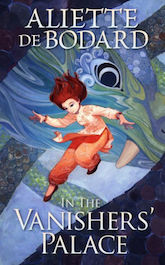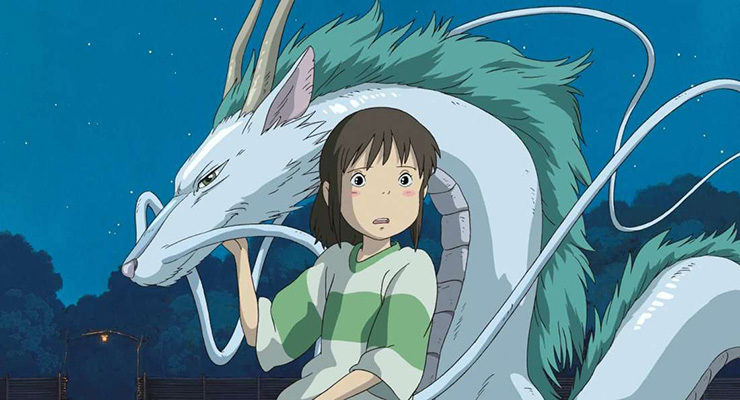I grew up with dragons and scholars: the rồng, the dragons of my mother’s and grandmother’s tales, old and wise spirits that lived beneath the rivers and seas who brought rain and floods to bless the fields and the harvest. Rồng are a meld of animals: they have the antlers of a deer, the mane of a lion, the body of a snake, though they also have short, stubby legs.
They can be born from eggs, but the legend I grew up with was that of the Dragon’s Gate, which is a waterfall at the top of a legendary mountain. Carps can swim upstream against the current, but they have to be strong and brave to leap over that final waterfall, and those who do transform into a dragon: the dragon’s scales are meant to recall their origin from the fish.
Dragons and humans don’t have a clearly delineated boundary: in Vietnamese folklore, many creatures can take human shape, and dragons are no exception–though their human shape will be fierce and fanged, sometimes with antlers, sometimes with scales or a mane. Indeed, one proverb the Vietnamese use to refer to themselves is “Con Rồng, cháu Tiên” (“children of dragons, grandchildren of immortals”), because Vietnamese people (and the first kings) were descended from the union of dragon prince Lạc Long Quân and mountain immortal Âu Cơ.
The other mainstay of the stories I was told were the sĩ/quan, the scholar-officials of Vietnam: in most of the tales that I know, the scholars are poor and not yet risen to official status. They live in poverty with their aged mothers, and study the classics in order to pass the Metropolitan examination and get an official post away from their village. They study words and language and the classics, and everything written is so important it might as well be magic.
In the fairytales or fantasy I consumed, I seldom found these. The dragons I read or saw on screen were fire creatures, and overwhelmingly malevolent forces to be killed. They were Smaug in Tolkien’s The Hobbit, greedy and quick to anger, rising from the heart of the mountain to devastate a town. They were hapless pets, fire beasts with hoards, malevolent and strong, subsisting on (it seemed) kidnapping maidens. Even the sentient ones were either alien creatures, or down-to-earth and pragmatic, with none of the awe I associated with my dragons.
The scholars were wizards, and tended to be sidekicks. Knowledge and books came in handy sometimes, but birthright or battle prowess trumped it, and the underlying expectation was that wizards or magic-wielders were separate from the temporal ruling class (these could have magic, but it was a birthright rather than acquired knowledge). They were the analogue of priests rather than political officials, and when they did rule they were dark and evil and barely human anymore.
And yet, in some places, I caught a glimpse of the dragons and scholars of my heart. Ursula Le Guin’s Earthsea Quartet has dragons that breathe fire, fear drowning and are the enemies of mankind, but they are as beautiful, and the language they speak is that of magic that remakes the world. By the time I read Tehanu, and the dragon Kalessin comes to rescue Ged and the chlid Tehanu is revealed to be a dragon herself, I was entranced. In Terry Pratchett’s The Colour of Magic, the dragons of the Wyrmberg are summoned by an act of imagination—and I still hold my breath when hapless tourist (and Asian analogue) Twoflower, who’s long been fascinated by dragons, summons his own dragon and uses it to rescue his companion Rincewind.
And, of course, there is Haku in Spirited Away. He’s a Japanese dragon who also has a human shape, but so much about him is familiar, from his general shape to his backstory: he is a river spirit who has forgotten his name, and whose river is now under buildings. Towards the end of the story, Chihiro flies on Haku’s back, and remembers falling into the river as a child—and there’s a brief glimpse of a serpentine body underwater, and a child’s shoe carried away by the wild force of the river. That scene never fails to give me shivers.
Buy the Book


In the Vanisher’s Palace
I also found scholars in my books: Patricia McKillip’s Alphabet of Thorn is set in a library, and the main character Nepenthe is an archivist in training who finds a mysterious book and gradually figures out that the language of the book itself is magic. At the end, she makes the choice of staying in the library rather than the empire offered by her time-travelling parents—something the old scholars would definitely have approved of! And though Mr Norrell in Susanna Clarke’s Jonathan Strange and Mr Norrell is short-tempered and disagreeable, I fell in love with the novel the moment we entered Norrell’s library of magic books.
I wanted to write my own version of this: something that would speak to both the books I loved and the stories I was told. I wanted to write for my ten-year-old self, who so desperately yearned to see herself in stories that she rewrote comic books and movies so that she, too, would get to hold a lightsaber.
In the Vanishers’ Palace is a retelling of Beauty and the Beast, but I’ve kept only the frame of a woman given against her will to a fantastical creature. The Beast is Vu Côn, a dragon, a cold and aloof river spirit attempting to heal a broken world, who can easily shapechange between dragon and human form; and Beauty is Yên, a scholar who by all standards is a failure—not possessed of magic in a world where writing itself is magical, and unable to pass the state examinations which would have been her pathway to power and safety. And the palace itself is a merge of Escher-inspired dizzying architecture, but combined with the more classical layout of Huế’s imperial citadel.
I wrote In the Vanishers’ Palace because I wanted to put the stories of my heart into fiction.
Oh, wait: I lied about only keeping the frame of the fairytale. I kept the magical library from the Disney version of Beauty and the Beast, too—because I just couldn’t resist that particular temptation!
Read an excerpt from In the Vanishers’ Palace here.
Aliette de Bodard lives in Paris, and writes speculative fiction: her short stories have garnered her two Nebula Awards, a Locus Award and two British Science Fiction Association Awards. She is the author of the Dominion of the Fallen series, set in a turn-of-the-century Paris devastated by a magical war, which comprises The House of Shattered Wings (2015 British Science Fiction Association Award), and its standalone sequel The House of Binding Thorns (2017 European Science Fiction Society Achievement Award). Her latest is In the Vanishers’ Palace, a dark retelling of Beauty and the Beast where they are both women and the Beast is a dragon.










